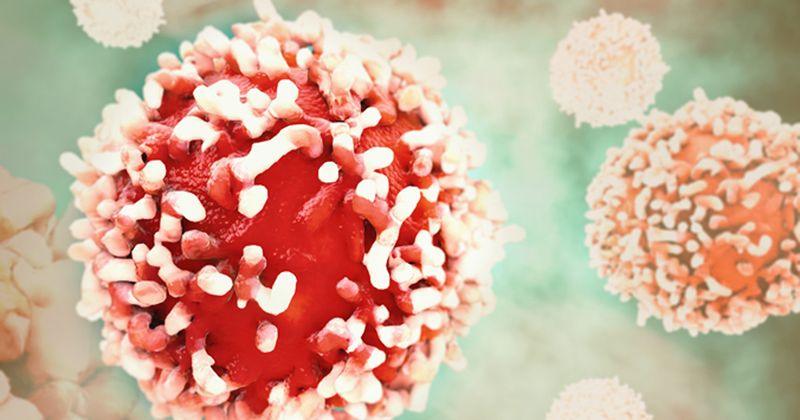‘No evidence’ of increased short-term cancer risk for JAK inhibitors vs. TNF inhibitors
Clinical data found “no evidence” of a higher short-term cancer risk, except for non-melanoma skin cancer, in patients with rheumatoid arthritis or psoriatic arthritis starting Janus kinase inhibitors vs. TNF inhibitors, researchers wrote.
However, the data, published in the Annals of the Rheumatic Diseases, reveal there may be an increased risk for non-melanoma skin cancer in those initiating JAK inhibitors, compared with TNF inhibitors, “at least in patients with RA,” the researchers added.

“For the most recently introduced class of [disease-modifying antirheumatic drugs (DMARDs)], the targeted synthetic DMARDs (tsDMARD) Janus kinase inhibitors (JAKi), concerns have been raised that the mechanism of JAK inhibition could increase risk of cancer,” Viking Huss, MD, of the Karolinska Institute, in Stokholm, and colleagues wrote. “These concerns were recently fueled by the results from the ORAL Surveillance safety trial of tofacitinib versus adalimumab/etanercept, including patients with RA above 50 years of age with at least one cardiovascular (CV) risk factor, in which a 50% relative increased risk of cancers excluding NMSC, and at least an equally large risk increase for NMSC was reported among those treated with JAKi versus TNFi.
“These findings have led regulatory agencies such as the Food and Drug Administration and the European Medicines Agency to issue warnings on cancer risks, extended to the entire class of JAKi drugs, even if it is still uncertain whether any increased cancer risk differ between individual JAKi considering their somewhat different pharmacological properties,” they added.
To compare cancer risk among patients prescribed JAK inhibitors vs. biological DMARDs, Huss and colleagues performed an observational cohort study of patients with RA or PsA. The researchers used prospectively collected data originating at clinics in Sweden between Jan. 1, 2016, and Dec. 31, 2020, including the Swedish Rheumatology Quality Register, the National Patient Register, the Longitudinal Database for Insurance and Labor Market Studies, the Prescribed Drug Register, the Population and Cause of Death register and the National Cancer register.
Using this data, the researchers identified all patients aged older than 18 years who had RA or PsA, as well as five comparators from the general population for each included patient. Treatment initiations were classified as either TNF inhibitors, non-TNF inhibitor biologic DMARDs or JAK inhibitors.
TNF inhibitors included adalimumab (Humira, AbbVie), certolizumab pegol (Cimzia, UCB), etanercept (Enbrel, Amgen), golimumab (Simponi, Janssen) and infliximab (Remicade, Janssen); non-TNF inhibitor biologic DMARDs included rituximab (Rituxan, Genentech), abatacept (Orencia, Bristol Myers Squibb), tocilizumab (Actemra, Genentech), sarilumab (Kevzara; Sanofi, Regeneron); and JAK inhibitors included baricitinib (Olumiant, Eli Lilly), tofacitinib (Xeljanz, Pfizer) and upadacitinib (Rinvoq, AbbVie).
The primary outcome was the manifestation of any cancer besides non-melanoma skin cancer. Other cancer manifestation outcomes included prostate, testicular, female breast and hematopoietic cancers.
The analysis included a total of 10,447 patients with RA and 4,443 patients with PsA who started treatment with a TNF inhibitor, a non-TNF inhibitor biologic DMARD or a JAK inhibitor.
Among those with RA, 1,967 patients received a JAK inhibitor, 3,520 received a non-TNF inhibitor biological DMARD, and 7,343 were in the TNF inhibitor group. The median follow-up times in patients with RA were 1.95 years, 2.83 years and 2.49 years, respectively. In patients with PsA, 379 were in the JAK inhibitor group, 185 received non-TNF inhibitor biological DMARDs and 4,186 initiated a TNF inhibitor. The median follow-up times for these patients were 1.52 years, 2.25 years and 2.44 years, respectively.
Among the patients with RA, there were 38 cases of cancer other than non-melanoma skin cancer in patients receiving JAK inhibitors, compared with 213 in patients receiving TNF inhibitors (HR = 0.94; 95% CI, 0.65-1.38). There were 59 cases of non-melanoma skin cancer in patients receiving JAK inhibitors, compared with 189 cases in patients receiving TNF inhibitors (HR = 1.39; 95% CI, 1.01-1.91). At 2 or more years since treatment initiation, the HR for non-melanoma skin cancer was 2.12 (95% CI, 1.15-3.89).
In patients with PsA, there were five cases of cancer other than non-melanoma skin cancer in patients receiving JAK inhibitors, compared with 73 in patients receiving TNF inhibitors (HR = 1.9; 95% CI, 0.7-5.2). Additionally, there were eight cases of non-melanoma skin cancer in patients receiving JAK inhibitors, compared with 73 receiving TNF inhibitors (HR = 2.1; 95% CI, 0.8-5.3), according to the researchers.
“Among individuals with RA or PsA, we found no evidence of an increased short-term risk of all cancers other than NMSC for patients initiating JAKi compared with TNFi, but the risk of NMSC may be increased, at least in patients with RA,” Huss and colleagues. “Although our results add to the concerns regarding the safety of JAKi with regard to NMSC, a causative biological mechanism remains to be determined and the risks must be viewed in light of the elevated risks for several other comorbidities and adverse outcomes in patients with active RA for whom alternative treatment options may not exist.”
